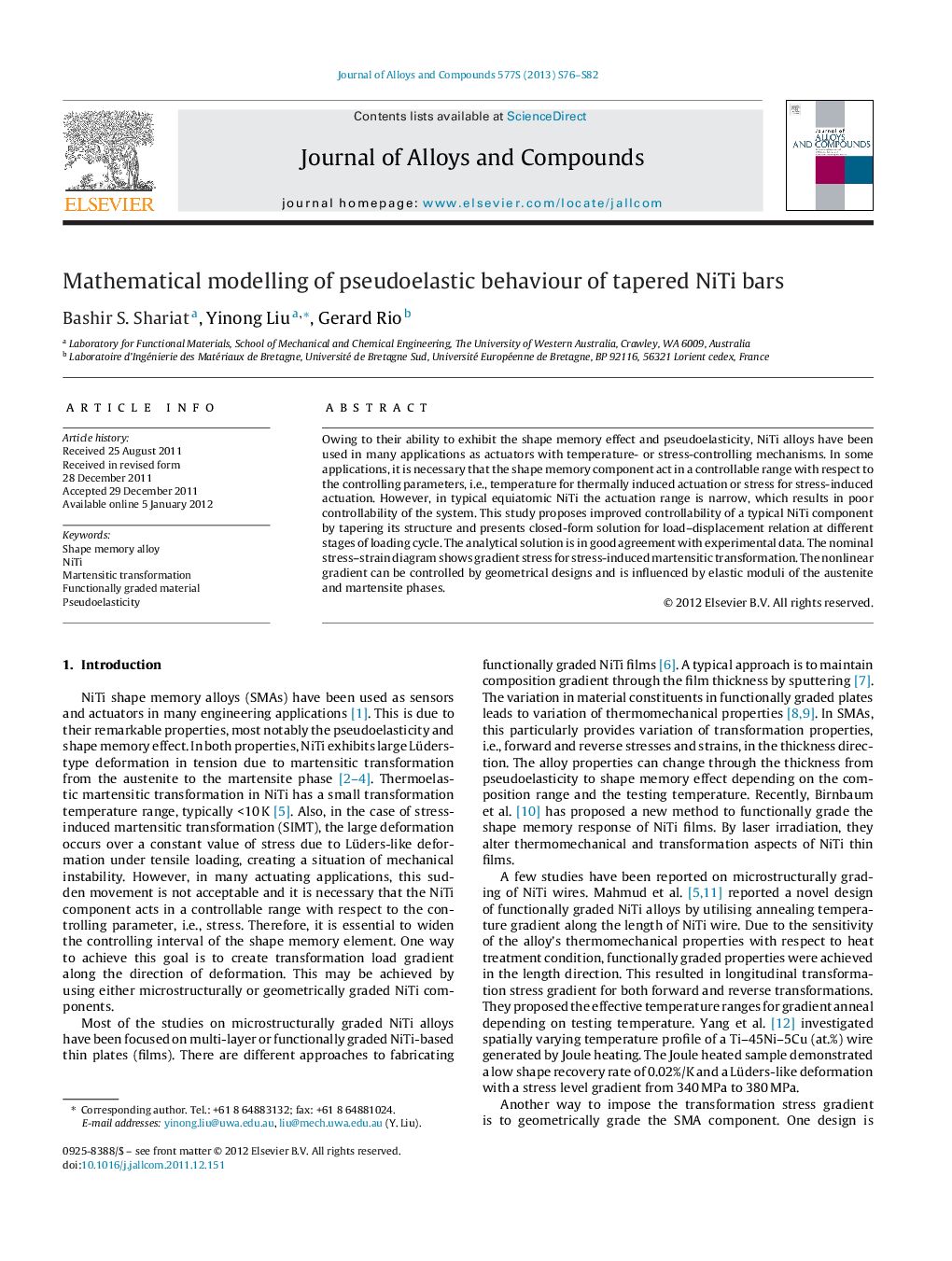| Article ID | Journal | Published Year | Pages | File Type |
|---|---|---|---|---|
| 1613762 | Journal of Alloys and Compounds | 2013 | 7 Pages |
Owing to their ability to exhibit the shape memory effect and pseudoelasticity, NiTi alloys have been used in many applications as actuators with temperature- or stress-controlling mechanisms. In some applications, it is necessary that the shape memory component act in a controllable range with respect to the controlling parameters, i.e., temperature for thermally induced actuation or stress for stress-induced actuation. However, in typical equiatomic NiTi the actuation range is narrow, which results in poor controllability of the system. This study proposes improved controllability of a typical NiTi component by tapering its structure and presents closed-form solution for load–displacement relation at different stages of loading cycle. The analytical solution is in good agreement with experimental data. The nominal stress–strain diagram shows gradient stress for stress-induced martensitic transformation. The nonlinear gradient can be controlled by geometrical designs and is influenced by elastic moduli of the austenite and martensite phases.
► Closed-form solution for nominal stress–strain behaviour of tapered NiTi bar is obtained which perfectly predicts the actual experiments. ► By tapering the SMA bar, nonlinear stress gradient is created over the stress plateau associated with the stress-induced martensitic transformation, which widen the controllable interval. ► The nonlinearity of the stress gradient is affected by material and geometrical properties. ► By reducing the radius ratio, the length and slope over stress plateau and its nonlinearity increases.
